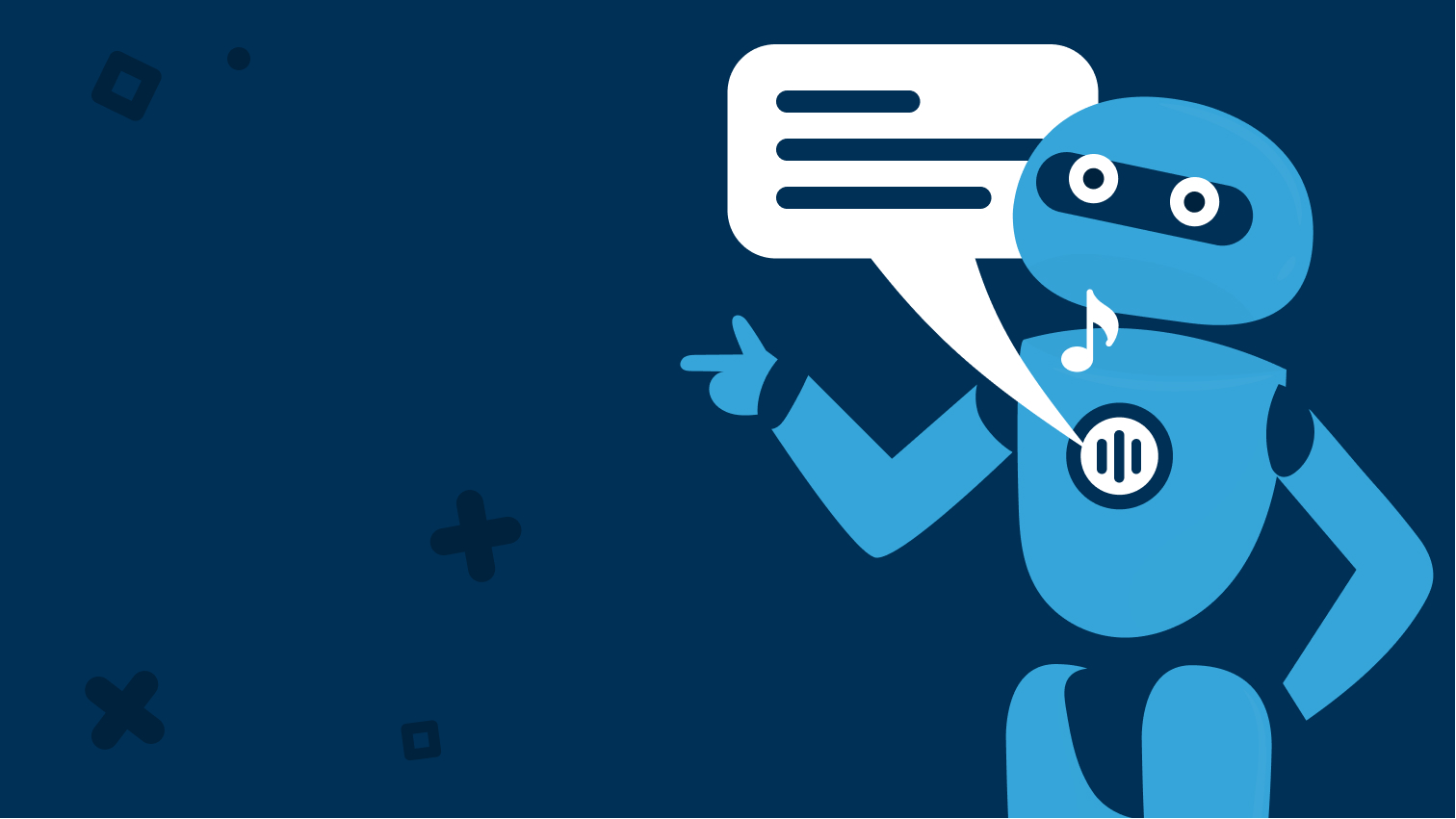
Chatterboxes: The Impact of a Native eCommerce Chatbot for Your Business
Chatterboxes: The Impact of a Native eCommerce Chatbot for Your Business
Engagement is one of the critical factors for eCommerce companies’ campaigns that are designed to improve conversion rates. In an online world where leads and customers are constantly bombarded by so many advertisements and a myriad of information from all angles, getting someone’s attention long enough to engage with them becomes vital.
It’s no longer enough to just catch the eye with excellent social media posts and advertisements. Once you get them on the page, it becomes a matter of user experience, where the better the UX is, the more likely a customer will stay, browse along, and ultimately make a purchase.
From reviews to recommended products, personalized landing pages to cart reminder emails, eCommerce businesses are looking for better and more effective ways to keep their customers engaged and provide them with an experience they need. A better experience improves conversion rates.
One significant feature being added to businesses’ digital marketing suite is the advent of chatbots, which play into the massive role that AI will take when it comes to shaping marketing campaigns.
So, what’s a Chatbot?
Frequent online shoppers will have spotted this nifty new feature on a variety of online storefronts and shopping websites. A chatbot works through a chat feature found implemented on the website or through a business’ Facebook page via Messenger. Ultimately, a chatbot is a program that simulates and mimics a human conversation with a user. The chatbot isn’t just presented with a preset list of responses—it has a flowchart of how a conversation should proceed depending on a human’s response. It tracks keywords that are used by the people it’s conversing with and responds accordingly.
A single chatbot can have multiple functions and abilities. The most basic chatbots have a few templated responses set to guide a customer through simple replies. They can are best used for frequently asked questions or even automated answers to queries during out-of-hours. More sophisticated AI for chatbots can do so much more than that: they can give customers recommendations, they can resolve technical issues, and they can even complete purchases for customers through the chat itself. It’s mostly a tool that leads to a better, improved conversion rate through customer engagement.
It’s A Bot that Talks for You. But Will Customers Talk Back?
One of the concerns that a business might have when it comes to having a chatbot is losing the human element. Many companies still believe that the relatable human element will improve conversion rates, as people want someone they can communicate with and understand the nuances of their concerns. However, there’s proof that chatbots are becoming even more embraced by individuals, especially in an online shopping capacity.
- Hubspot finds that approximately 55% of consumers prefer to communicate with a business through messenger apps.
- 56% of people would also rather message instead of calling customer service. Whether it’s long queue lines in customer service or simply preferring to type rather than talk, customers just want to communicate directly without calls.
- 53% of people are also more likely to shop (and keep shopping) at a business that can be messaged online. This statistic can considerably affect business and improve conversion rates.
- Every month, 2 billion messages are sent between customers and businesses; that is a tremendous opportunity for a company to establish its brand and its presence in a consumer’s mind.
With all these statistics in mind, a business can do either of two things: it can ramp up messenger communication between customers and their team or get a chatbot.
But why a Chatbot? What can it do?
While it’s true that there’s still no real replacement for human interaction, online or offline, chatbots come incredibly close. They do a lot of the robotic conversational work that many customer service reps may have to go through, and they can provide a myriad of advantages.
Improved customer engagement
As mentioned previously, customers simply prefer to communicate via messenger apps. It’s immediately accessible to them because they would have likely seen a company or its products and services online. They are already on a computer or mobile phone, so why not communicate directly through a messenger app? As people would also prefer to talk through the app, they are more likely to reach out and ask. This immediately lifts the engagement rates between company and customer and leads towards an improved conversion rate.
Drives up sales
One of the many reasons why a potential lead may hesitate in purchasing an item is a lack of information. They may see a product or service that they like but aren’t sure if it’s a fit for their specific needs. They need to ask for more information, and talking with a chatbot can do just that. If they don’t find what they’re looking for on the page, they will want to speak to someone who knows, and the chatbot can provide that information. The customer gets the information they need, and they will become more comfortable making the purchase.
Reduces customer acquisition cost
Chatbots are sophisticated enough to handle sales operations, leading to a far lower customer acquisition cost. Instead of hiring multiple sales personnel to handle to process hundreds, even thousands, of requests and purchases, the chatbot can manage that for you. It will all depend on the sophistication of the chatbot, and it’s AI as well as the platform, but when used correctly, the chatbot helps cut the costs while bringing up profits.
Decreases customer support costs
In the same vein as the previous point, the chatbot can handle customer service functions so businesses can save on hiring a great customer support team. A chatbot can be programmed to respond to common questions and issues that a customer may have and walk through the solutions. This way, a majority of the items are filtered through the bot first to be solved, and more specific or intricate questions can be forwarded to a standby human customer service team that would have far less to handle.
Building loyalty
Having their questions answered quickly, provided the right information, and, most of all, being able to promptly communicate with a brand will build loyalty. The chatbot being able to respond to customers enables a business to improve conversion rates, customer engagement, and, more importantly, retention. ROI is proportional to customer retention. The chatbot’s AI needs to be very well-informed of what the customers want and need. Through this method, the company can maintain the brand quality that customers expect and appreciate.
Streamlines the sales funnel
A sales funnel is the term experts call the process that leads customers into making a purchase. It’s how they process questions and steps to take that ultimately brings the customer to a successful purchase. Chatbots can do this for eCommerce sales by streamlining it. Talking to a chatbot instead of going through the webpages keeps a customer’s attention, awareness, and interest in one place.
The chatbot can even make the right recommendations to pique the customer’s interest, leading to decisions. The bot can then guide them along to the checkout for direct action and end the experience with a purchase. Remember, 47% of consumers are willing to buy items from a chatbot, with 37% willing to do this even from Facebook. That’s a statistic that leads to improved conversion rates that no business should ignore.
Bots in the Big Leagues
The big-name retailers online have already been taking full advantage of the benefits that chatbots offer. For example, Staples uses a Facebook Messenger chatbot to give its customers relevant product recommendations based on what they had previously purchased. Major cosmetics retailer Sephora, on the other hand, has a Kik-based bot that offers its clients makeup tips paired with product recommendations, before directing them to the website to complete the buy. And of course, there’s clothing brand H&M, which takes in information about their customers’ preferred style and offers photographs that they can look through.
The trend in chatbots for major online retailers follow two distinct patterns:
Messenger merchandising
The chatbots used in this method utilizes other platforms such as Facebook Messenger and Kik. As there are so many consumers willing to shop through a chatbot, these messenger bots have become an interactive tool. Instead of browsing page by page to buy, the bots can offer specific recommendations based on information that a customer has provided.
Some of them can even handle image recognition through a mobile device’s camera, allowing customers to show the bot examples of what they are looking for. The bot then provides suggestions based on what information is provided. Chatbots like these can vary when it comes to features and capabilities. However, for a truly immersive experience, it may be worthwhile to look into a native chatbot.
Native assistants
A native assistant is a chatbot that has been specifically designed for one brand, integrated into the website or online store itself. Unlike other chatbots that run on other platforms, this bot is the one that pops up at the corner of online retailers’ web pages. They are easily noticeable and reachable by the customers who are already on the company’s website. In essence, the native chatbot creates a more “customized” brand experience for the visitor without having to stray to another platform.
Going Native: What Does a Native Chatbot Do?
Everything in context
Because the bot is integrated into the website, native chatbots can serve and help customers while preserving the brand image and hallmarks. Customers can easily associate them with the company and utilize them to browse through the website’s offerings. They are much more accessible to all the site’s visitors and are easier to find than the bots they would usually have to see through other platforms.
More capabilities and customization
In line with keeping the brand’s ideal user experience and characteristics preserved, a native chatbot could have multiple custom features. Through specific APIs, the bots can pull information from the customer’s account on the website, using their previous purchases or wish lists to create recommendations and note preferences. Customers find what they like and make more purchases, improving the conversion rate. The chatbots can even have proactive features that can be triggered by the customer if needed, such as sending out a ping if the customer exceeds a specific total in their cart.
Omnichannel and endless-aisle
Another excellent reason to have a native chatbot is that the website itself can take the data from what they learn. The APIs can sync inventory management in real-time. This is particularly convenient for mobile shoppers who no longer have to browse through categories or pages painstakingly. They could simply scan a barcode or upload a photo of the item that they want and find the specific item, along with different colorways or variants.
Better security, protecting information
Without a doubt, native chatbots will be far better at protecting sensitive information than those from other platforms. All the transactions and data will be handled on the site itself, without having to go through a third party means of communication. The native chatbot will reassure customers that their information is dealt with by the company and no one else.
Going beyond the bot
Chatbots become a tool of their own, even in-store. They can respond through digital installations, wearable devices, smart speakers, and more. This allows more means of communication, even for devices that don’t have a display. The bots are part of the smart-devices and can use them accordingly, going beyond the grain of what a usual chatbot could do.
Final words
Ultimately a chatbot is a multi-function tool that won’t just improve conversion rates; it can do just about anything. Utilizing AI-powered chatbots can lead companies to lower customer service costs, more streamlined sales, and overall better user experience for their customers, leading to return visits and purchases. The chatbots are not just robotic responders—they have become the curators of an online experience that is specifically tailored to engage with customers in the best ways.
Has your company considered the use of a chatbot or have already experienced integrating one? How have chatbots changed the way you do your marketing strategies? Let us know in the comments below.
The views included in this article are entirely the work and thoughts of the author, and may not always reflect the views and opinions of Regex SEO.

